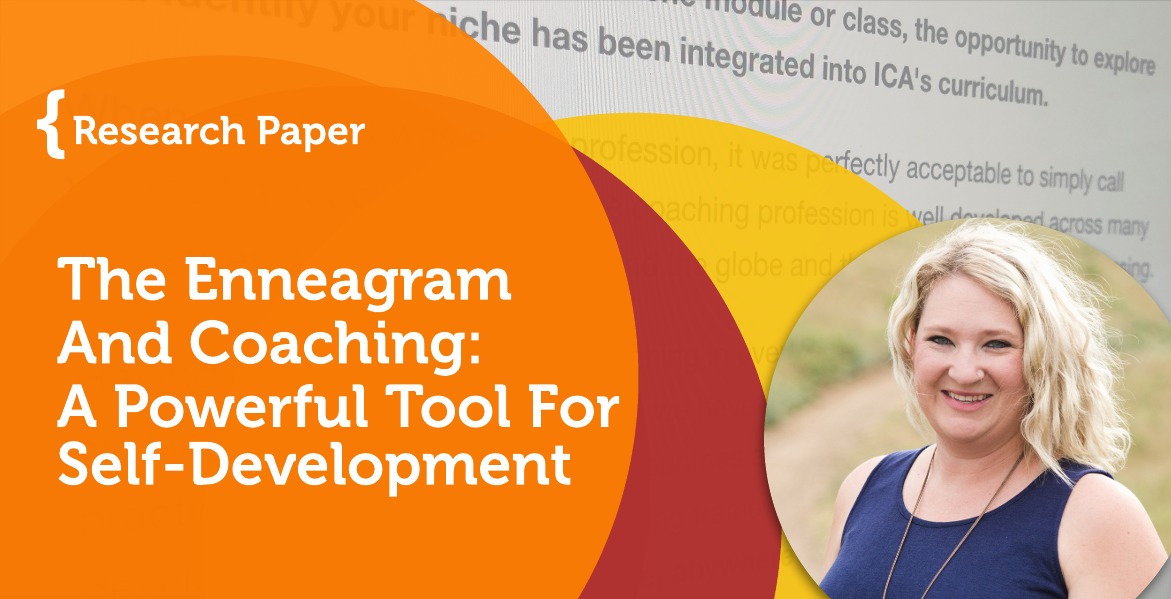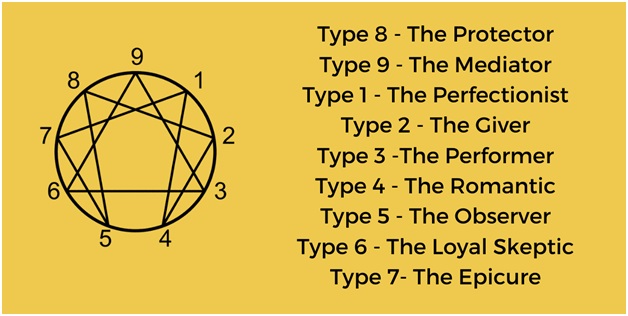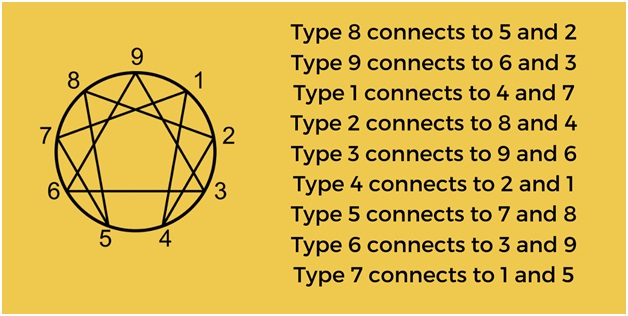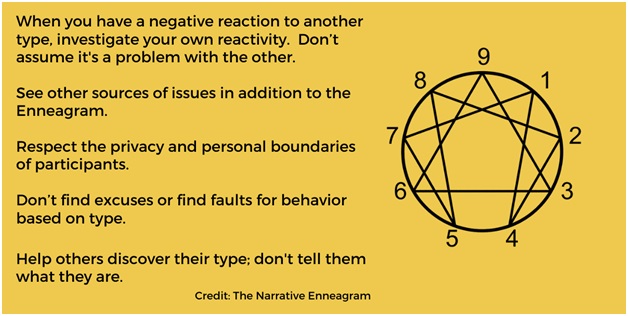 Research Paper By Emily Rayburn
Research Paper By Emily Rayburn
(Self-Development Coach, UNITED STATES)
 2020 was a strange year for us all. One of the most challenging aspects for me was that I became, for the first time, a homeschool parent. What a journey that has been! Daily I’ve been challenged, granted opportunities to celebrate small wins, and experienced so much learning! Some of that learning has been about early European explorers coming to the “new world” and the challenges they faced in the name of God, gold, and glory. One of the challenges those explorers faced was navigating the journey without a proper map. As I worked through these lessons with my kids this past year, I began to think how hard it is to go on a journey without two key elements – a purpose for venturing out and a map to know where you are going. As I think about growing my coaching practice and helping my clients on their journey of self-discovery and development it has occurred to me that without those same elements – a purpose and a map – it’s difficult to truly learn more about yourself and use that knowledge to create positive and lasting change. Fortunately, I’ve been lucky enough to learn about a powerful tool for self-development work called the Enneagram. As I learned more about this personality tool, I began to see the great potential it has to work in a coaching modality. The Enneagram symbol itself is based on sacred arithmetic and geometry, and it has many ties to more mystical spiritual qualities of the ancient past. What I work with is the Modern Enneagram of Personality, a fascinating system that blends this ancient wisdom with modern psychology. The basic premise of the system is that there are 9 personality archetypes and all people can relate to, or lead with, one type over the others. Each type is given a number, 1-9.
2020 was a strange year for us all. One of the most challenging aspects for me was that I became, for the first time, a homeschool parent. What a journey that has been! Daily I’ve been challenged, granted opportunities to celebrate small wins, and experienced so much learning! Some of that learning has been about early European explorers coming to the “new world” and the challenges they faced in the name of God, gold, and glory. One of the challenges those explorers faced was navigating the journey without a proper map. As I worked through these lessons with my kids this past year, I began to think how hard it is to go on a journey without two key elements – a purpose for venturing out and a map to know where you are going. As I think about growing my coaching practice and helping my clients on their journey of self-discovery and development it has occurred to me that without those same elements – a purpose and a map – it’s difficult to truly learn more about yourself and use that knowledge to create positive and lasting change. Fortunately, I’ve been lucky enough to learn about a powerful tool for self-development work called the Enneagram. As I learned more about this personality tool, I began to see the great potential it has to work in a coaching modality. The Enneagram symbol itself is based on sacred arithmetic and geometry, and it has many ties to more mystical spiritual qualities of the ancient past. What I work with is the Modern Enneagram of Personality, a fascinating system that blends this ancient wisdom with modern psychology. The basic premise of the system is that there are 9 personality archetypes and all people can relate to, or lead with, one type over the others. Each type is given a number, 1-9.
 While this may seem like a mere personality test, it is actually much more than that. It’s an entire framework to build a lifetime of self-development workaround. Each Enneagram type has many elements to it such as a higher and lower emotional habit, a mental fixation, a defense mechanism, and even certain elements of physical and instinctual variation for each type. It is a very deep and holistic system. The structure provides also points us to two other E-types that connect to our own which provide the perfect antidote for living from a space of relaxation of the type structure. This process of understanding, observing, accepting, and then loosening the type’s hold on us is a very practical and helpful tool when used from a coaching perspective. According to Enneagram expert and psychotherapist Dr. Beatrice Chestnut, “Being able to change your behavior is central to any personal growth effort, and at the same time it’s incredibly difficult, given the power of our unconscious habits.” This is how a coach can use the Enneagram as a “map” to assist clients in gaining self-awareness so they can decide more consciously what the correct course of action is for themselves. In this paper, I explain how a coach can use the Enneagram with clients to give them language to better express themselves, foster curiosity and self-observation skills, and ultimately use the Enneagram as a map to guide further practices of self-development in a client lead fashion.
While this may seem like a mere personality test, it is actually much more than that. It’s an entire framework to build a lifetime of self-development workaround. Each Enneagram type has many elements to it such as a higher and lower emotional habit, a mental fixation, a defense mechanism, and even certain elements of physical and instinctual variation for each type. It is a very deep and holistic system. The structure provides also points us to two other E-types that connect to our own which provide the perfect antidote for living from a space of relaxation of the type structure. This process of understanding, observing, accepting, and then loosening the type’s hold on us is a very practical and helpful tool when used from a coaching perspective. According to Enneagram expert and psychotherapist Dr. Beatrice Chestnut, “Being able to change your behavior is central to any personal growth effort, and at the same time it’s incredibly difficult, given the power of our unconscious habits.” This is how a coach can use the Enneagram as a “map” to assist clients in gaining self-awareness so they can decide more consciously what the correct course of action is for themselves. In this paper, I explain how a coach can use the Enneagram with clients to give them language to better express themselves, foster curiosity and self-observation skills, and ultimately use the Enneagram as a map to guide further practices of self-development in a client lead fashion.
The Power in Words – How the Enneagram gives clients language to express and understand themselves.
First let’s look at a very basic element of the Enneagram system, how you find your (or assist your client in finding them) Enneagram type. This is one of the most valid arguments for why the Enneagram is an appropriate coaching tool. While there are tests that can suggest a client’s type, any respectable Enneagram teacher will tell you that the only person who can truly tell you what your type is, is YOU! I always prefer to teach someone about the Enneagram system, explain the basics of the nine types, and then conduct a typing interview to help clients dig deeper into what they know (or don’t currently know) about themselves. Then I suggest a few possible types and ask the client what they think about the possibility of them being one of those types. I invite the client to go deeper into their research of the possible types and how it makes them feel to consider this type for themselves. All of this is very in line with a coaching model, assuming the client wishes to discover their Enneagram type. In her book, The Art of Typing: Powerful Tools for Enneagram Typing, Dr. Ginger Lapid-Bogda states, “The Enneagram system is complex and can take people some time and self-reflection to figure out which type truly describes them best.” A coach is equipped to help clients through this process of self-reflection using skills of observations, asking powerful questions, listening to the clients (coaching the who), and challenging the client’s current perspectives on who they are and who they wish to be. Once a client has discovered their type, I’ve noticed it can be a very empowering experience to then claim that type through the language of the Enneagram. My personal training in the Enneagram is through The Narrative Enneagram Tradition founded by Dr. David Daniels and Helen Palmer. In this method, the practitioner or teacher asks clients/students to share their stories to demonstrate their way of thinking and being in the world. Listening to other’s stories helps everyone understand each type better. The value of personal perspective always gives way to any theory the Enneagram teaches. This keeps the power of self-discovery in the hands of the client – and encourages them to be the expert on themselves. However, for many clients, it can be difficult to express themselves if they are not accustomed to doing so. Therefore, the Enneagram provides language that allows them to do that. It’s a shared language that the coach also understands. I’ve found it very helpful to have clients say things like, “I guess I’m just really being a 1 here,” or “that was so 7 of me!” Because we have already explored what that means to the client when they are discovering their type, I can more easily understand what they are expressing. I also have seen it be a huge relief to people to see that they are not that unique and others actually think the same way they do. Again this can be discussed in the Enneagram lingo which is easier to understand when one knows this system. Finally, one word of caution, it is important to be sure that you aren’t making assumptions about a person even once they have discovered their type. While the common terminology helps in communication with clients and in building trust and intimacy, it can also become limiting and judgemental if not held correctly. It is still entirely necessary to be open, curious, and always let the client lead in any session with or without the Enneagram, while at the same time being appreciative of the gifts the system brings to a session.
The Power of the Enneagram to help clients become self-observers and foster a spirit of curiosity.
The second reason the Enneagram makes a great coaching tool is its encouragement of self-observation. Helen Palmer says, “Self-observation is a basic inner life practice that appears in several traditional disciplines. The practice consists of focusing your attention inwardly and learning to become aware of the thoughts and other “objects of attention” that arise within yourself.” This is not a simple practice or easy work to develop this “inner observer” but it is necessary if you desire real change in your life. Here the Enneagram is an excellent map to help us develop this skill through suggestions for each type. It points us to a basic focus of attention for each type. Starting here and asking clients what they think, how this focus of attention shows up for them, and what they might like to change it about can be a really helpful way to get at what’s going on underneath a topic that might be the point of the session. For example, my Enneagram type, 3, is all about achieving goals, being successful, and being admired by others as a way to be valued and loved. So the focus of attention often goes to completing tasks, looking for recognition, what project to work on next, and what others think of me. So often I’ve brought topics to other coaches that line up with that focus of attention such as, “I just don’t know what to do next in my business” or “I feel like I just don’t have time to get everything done,” and so on. So by developing my inner-observer and seeing how my attention is always moving forward to the next goal, how to be successful, what will make me feel valuable, I’m actually able to notice this in real-time and get curious about what’s happening. The value of the Enneagram here is that it helps me move in a direction so I can really see that indeed this is often my focus of attention. Then coaching helps me get curious about my observations. I can ask myself (or my client), “What’s really going on here,” or “What would I rather be focusing my attention on?” I might wonder, “What’s so important about being successful?” I could ask, “What does success look like for me?” The list goes on and on. There are so many wonderful elements to be curious about once the Enneagram, coaching, and self-development have opened up the inner observer. This is a critical step in any coaching process, the client must be able to have awareness. The Enneagram is a powerful aid in helping clients do this.
The Enneagram is a map – you know your type so now what?
Along with its ability to give language to the complex structure of our personalities and the opportunity to learn to use the inner-observer, the Enneagram provides a map of each type’s growth path. This is perhaps the most important gift of the Enneagram and has the most potential to be used in a coaching model. The Enneagram teaches that each type has two corresponding types that are connected to it.
 It is in these two other points that the growth path is discovered. For example, when looking at the Enneagram symbol type 2 is connected by the inner lines of the system to types 8 and 4. By learning more about those other types, Enneagram 2s can work out what they must do to live in a higher state of awareness. Type 2 is very concerned with being connected to, needed by, and helping others. So much so that they often don’t think of themselves as having needs at all. They also tend to repress their emotions. Often this leaves them feeling underappreciated and maybe even resentful. It could be helpful for type 2 to examine the type 4 structure and see that 4s are very in touch with their own emotions. A coach might ask, “What would being more in touch with your emotions look like?” “What would change if you took more time to think about yourself and your feelings?” “What might you need to do to take care of yourself more and others less?” Similarly, the type 2 client could look at type 8 and see they are very powerful and assertive. Often type 2’s are hesitant to ask for things they need, so you might ask a 2 “What would it be like to act more like an 8?” “What are some things you would like to ask for from others in your life?” “What would change if you were able to ask for help instead of always giving it?” Of course, these are just examples and it’s important to ask the client what they are noticing and build questions from there, but using the Enneagram as a guide to exploring what’s going on more deeply is very powerful. I find it can be very helpful in assisting clients in figuring out what they are really feeling, thinking, or experiencing.
It is in these two other points that the growth path is discovered. For example, when looking at the Enneagram symbol type 2 is connected by the inner lines of the system to types 8 and 4. By learning more about those other types, Enneagram 2s can work out what they must do to live in a higher state of awareness. Type 2 is very concerned with being connected to, needed by, and helping others. So much so that they often don’t think of themselves as having needs at all. They also tend to repress their emotions. Often this leaves them feeling underappreciated and maybe even resentful. It could be helpful for type 2 to examine the type 4 structure and see that 4s are very in touch with their own emotions. A coach might ask, “What would being more in touch with your emotions look like?” “What would change if you took more time to think about yourself and your feelings?” “What might you need to do to take care of yourself more and others less?” Similarly, the type 2 client could look at type 8 and see they are very powerful and assertive. Often type 2’s are hesitant to ask for things they need, so you might ask a 2 “What would it be like to act more like an 8?” “What are some things you would like to ask for from others in your life?” “What would change if you were able to ask for help instead of always giving it?” Of course, these are just examples and it’s important to ask the client what they are noticing and build questions from there, but using the Enneagram as a guide to exploring what’s going on more deeply is very powerful. I find it can be very helpful in assisting clients in figuring out what they are really feeling, thinking, or experiencing.
Enneagram and Ethics
I recently listened to a podcast, Enneagram 2.0, hosted by Uranio Paes and Beatrice Chestnut, in which they talk about using the Enneagram ethically and I think it is worth mentioning here. My case for using the Enneagram as a coaching tool holds much potential but it must be used in a way that is both honoring of the system itself and in alignment with the ethics of coaching. Because both coaching and teaching/using the Enneagram is unregulated there are really not any hard and fast rules that must be followed, but there are certain standards which hopefully any ethical person will desire to adhere to.
As I’ve already mentioned a few times the Enneagram is only a tool to aid in the coaching process and shouldn’t be held as anything else. The coach must be sure they agree with the client on if and how the Enneagram will be used in the coaching process. There is also particular care to be taken that the client is still valued as the expert in themselves and we don’t use Enneagram to do all the work for them. Clients must do their own work if they truly want to change their lives. Along with that, if coaches are to use the Enneagram there are three important elements to be considered. These three factors are taken from the Enneagram 2.0 podcast. First, the coach needs some sort of training in the Enneagram. This might be a weekend retreat, a full-out practitioner or teacher certification program, a series of online courses, or one on one instruction from a qualified teacher. The depth to which the coach is really willing to go in their own Enneagram education is the depth to which they should go with others. Someone who has only read a few books should not really be applying the Enneagram with clients.
On top of having some sort of training, the coach should also be doing their own self-development work using the Enneagram. If you aren’t using it in your own life, it’s probably best to not be using it with clients. Lastly, a coach needs to be aware of how their type structure plays into the process. This last step would be valuable for any coach, it’s a great self-management tool regardless of if you use the Enneagram with clients. When we become aware of our type and how that shows up in a session we are stronger coaches.
One final thought on using the Enneagram in coaching is to remember if you are not qualified to help someone through the typing process do not attempt to do so. There are coaches and teachers you can refer them to for that part of the process. Also, remember the preferred method of typing someone is to let them do the work to figure it out, tests are only offering suggestions on what type a person could be, but the person is the expert. If your clients can find their type by way of a professional and self-discovery, then you likely are completely able to discuss the findings with your client and use the process to move them forward in their understanding of themselves.
Here are a few tips for coaches who want to use the Enneagram ethically. These are taken from the Enneagram Practitioner Training from the Narrative Enneagram.
 In conclusion, there is much that can be adapted from the Enneagram to use in coaching. Whether it is used for the coaches’ own personal development and self-management skills or it is used directly with clients, there is no doubt it is a powerful tool. Being a powerful tool it must be used with training and caution. Also, it must not replace the fundamentals of the coaching process. It must support the clients in their own self-discovery and development, but not do the work for them. When used in this capacity it gives clients the language to express themselves in new ways to the coach, themselves, and others. It allows clients to develop their inner observer and become curious about what they see in themselves. It helps clients in developing their own unique growth path by exploring the wisdom of this amazing system. I am very grateful that this life-changing tool found me and I’m honored to bring it to my clients.
In conclusion, there is much that can be adapted from the Enneagram to use in coaching. Whether it is used for the coaches’ own personal development and self-management skills or it is used directly with clients, there is no doubt it is a powerful tool. Being a powerful tool it must be used with training and caution. Also, it must not replace the fundamentals of the coaching process. It must support the clients in their own self-discovery and development, but not do the work for them. When used in this capacity it gives clients the language to express themselves in new ways to the coach, themselves, and others. It allows clients to develop their inner observer and become curious about what they see in themselves. It helps clients in developing their own unique growth path by exploring the wisdom of this amazing system. I am very grateful that this life-changing tool found me and I’m honored to bring it to my clients.
References:
Palmer, H., 1991. The enneagram. [San Francisco]: HarperSanFrancisco.
Riso, D. and Hudson, R., 1999. Wisdom of the enneagram. New York, NY: Bantam.
Chestnut, B., n.d. The complete Enneagram. Berkley, CA: She Writes Press.
The Narrative Enneagram. 2021. Enneagram Worldwide. [online] Available at: <https://enneagramworldwide.com/> [Accessed 27 February 2021].
Paes, U., and Chestnut, B., 2021. Episode 10 – How to Build an Ethical Enneagram Community. Enneagram 2.0. Available at: <https://cpenneagram.com/category/enneagram-2-0-podcast/> [Accessed 27 February 2021].
Lapid-Bogda, G. and Suenaon, n.d. The art of typing. Santa Monica: The Enneagram in Business Press.
Rosario, R. and Saracino, T., 2020. The Enneagram for Therapists, Counselors, and Coaches. In: The Narrative Enneagram Training Program. p.5.